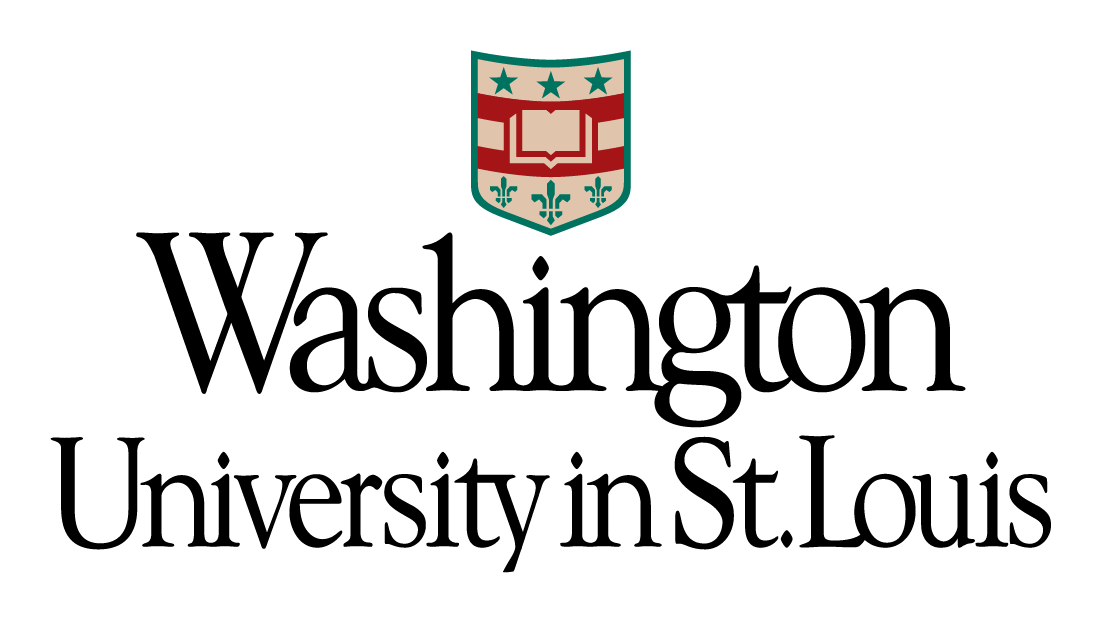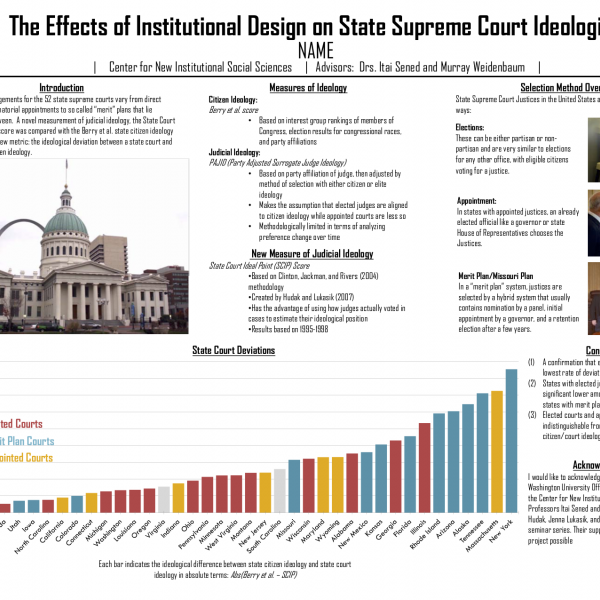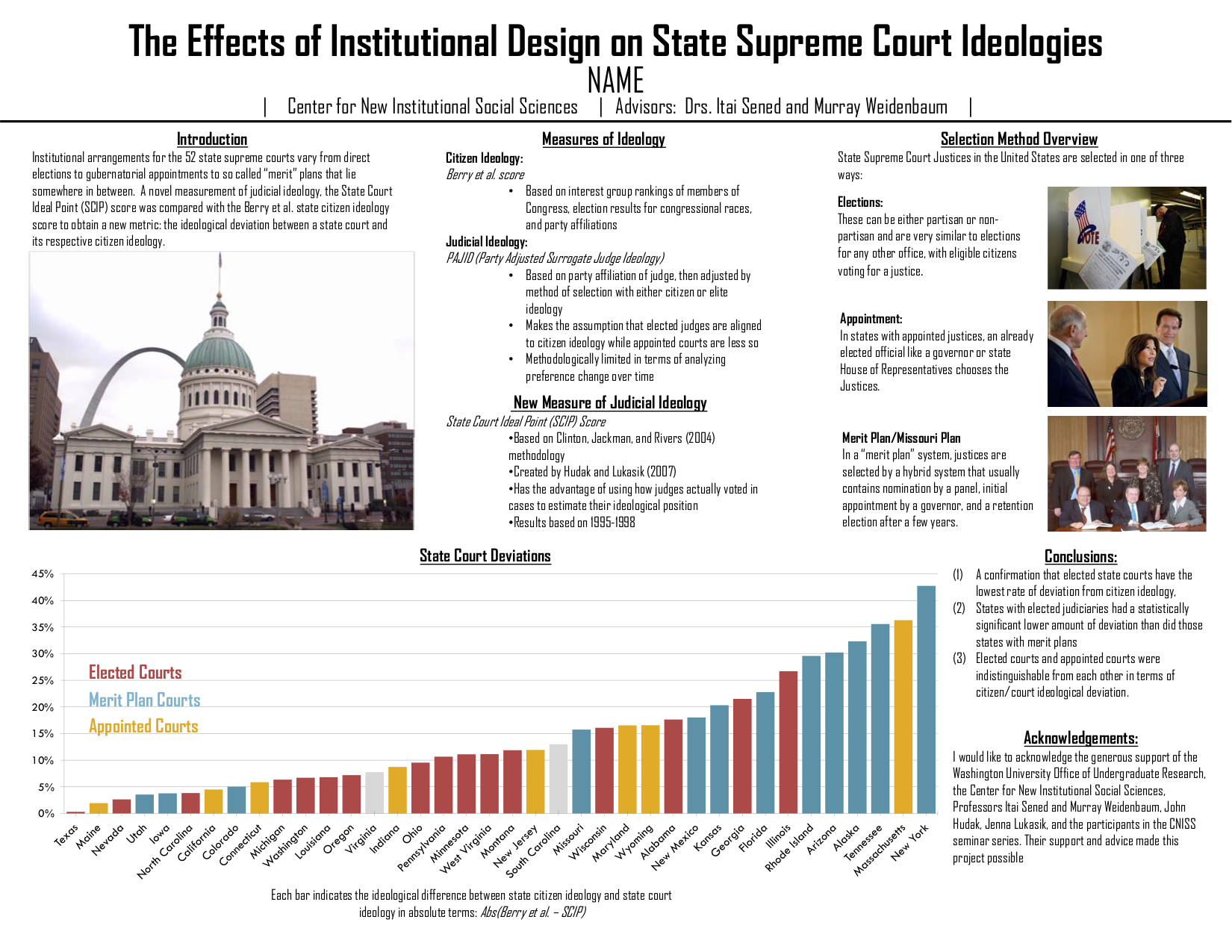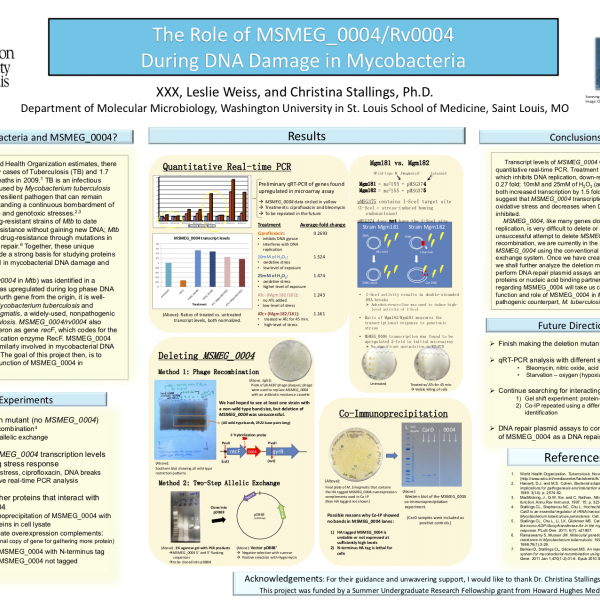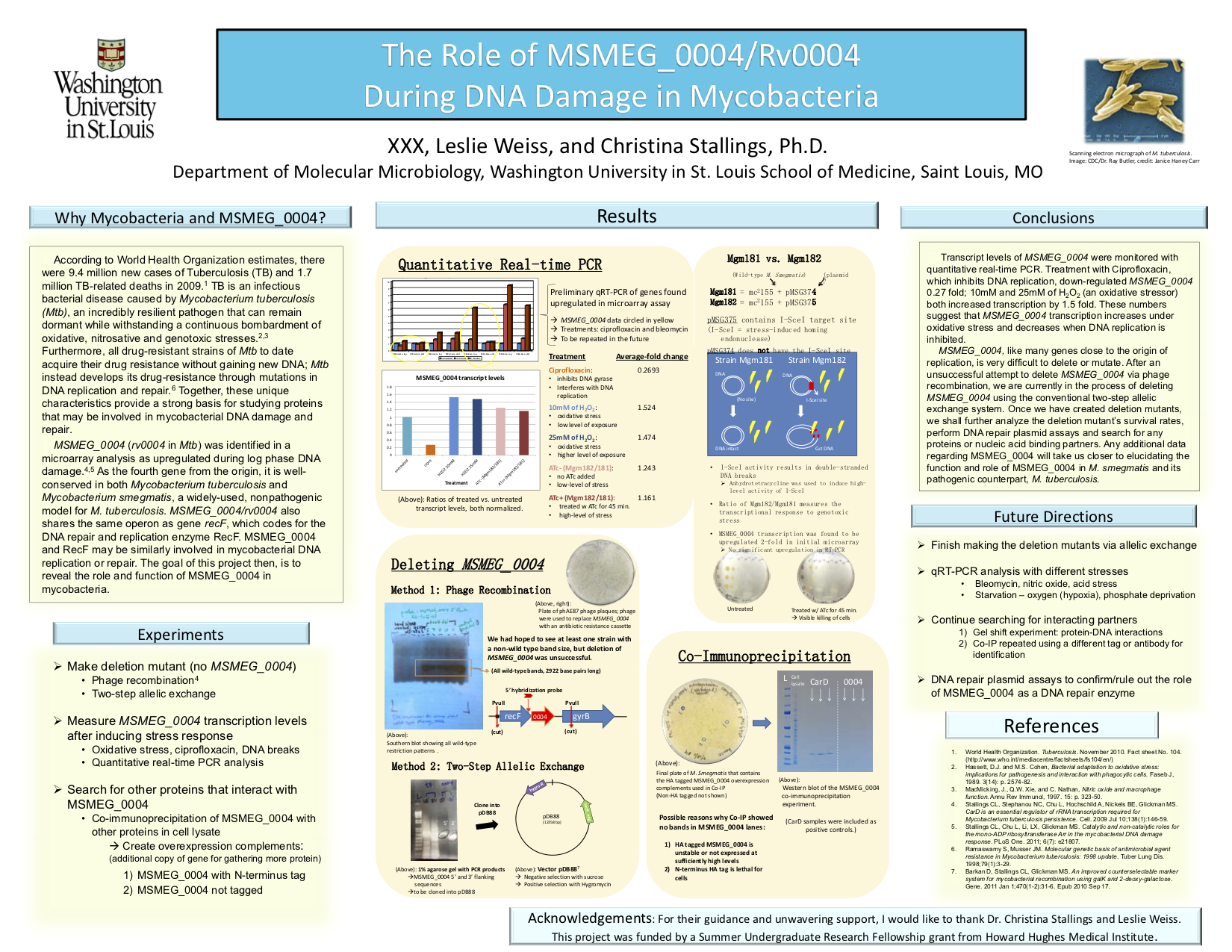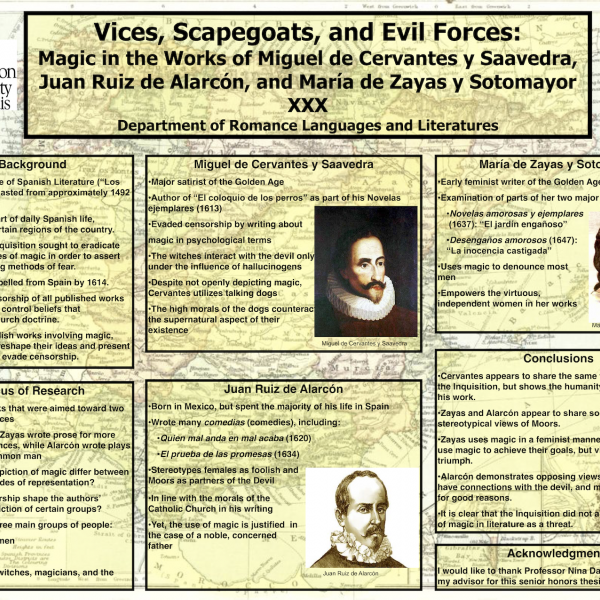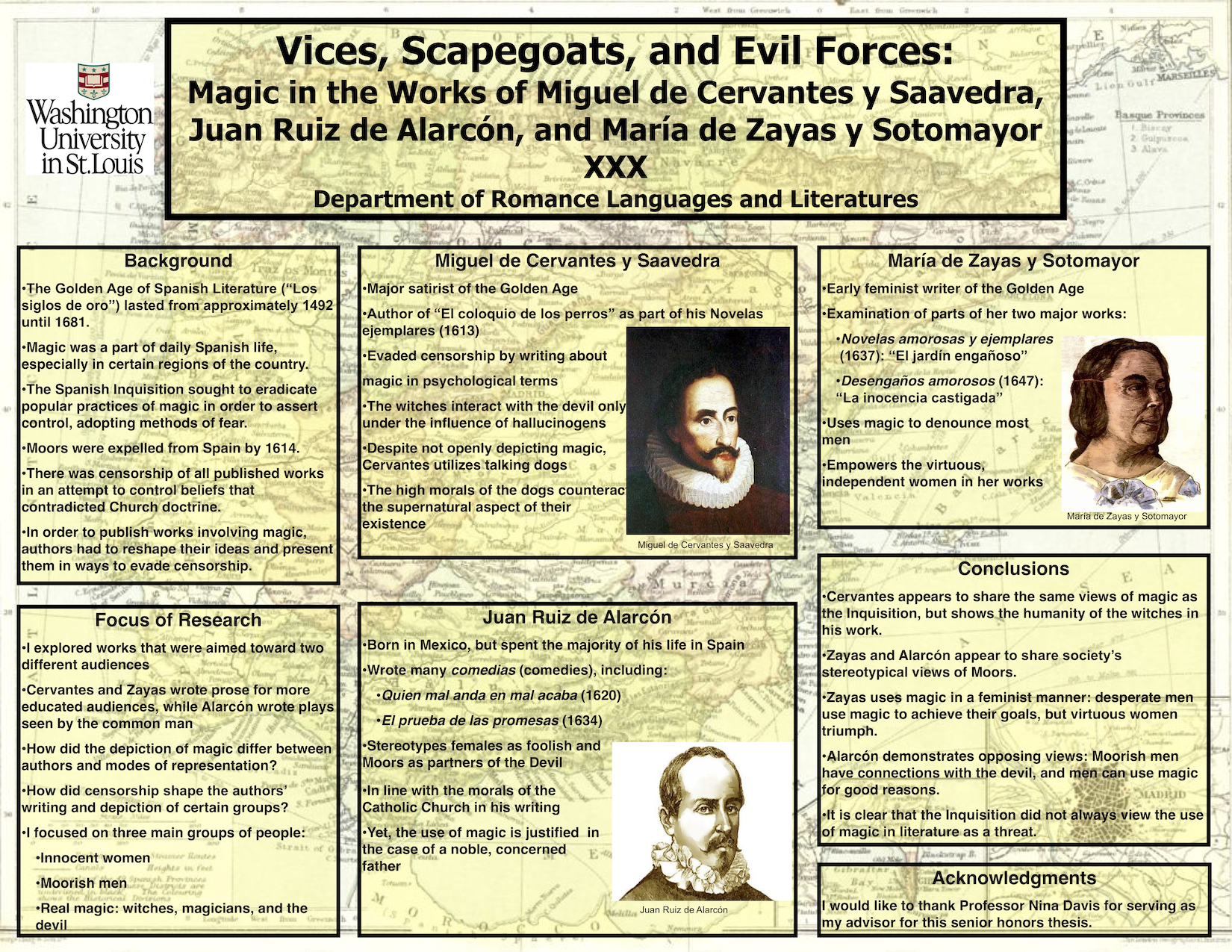What is an academic research poster?
Much like an abstract, an academic poster summarizes your research project and is designed to attract attention, communicate major points of the work concisely, and initiate conversation. An important difference, however, is that the poster should be academically sound and visually engaging: an effective poster uses images, graphs, charts, and other visual strategies with minimal descriptive text to tell a story in a concise and focused way. They are not meant to provide all the details of your work and, thus, can represent and invite feedback at any stage of the research process.
How do I prepare an academic research poster presentation?
Content
Begin by identifying the core message or key findings of your research project. This central idea should be the poster's focus and guide the selection of content sections. Typical sections include an introduction to provide background information and context, a methods section outlining the research methodology used, results showcasing the main findings or outcomes, and a conclusion summarizing the significance of the findings and potential implications. Consult your mentor about disciplinary conventions regarding the content and composition of posters in your field. Each section should be concise and visually appealing, with graphics, images, and charts used to communicate complex information effectively. Your poster text is meant to contextualize these visuals and should be limited to 800 words.
Below we have linked several resources to help you develop your poster content:
- Poster outline worksheet from the OUR (requires WashU Box login).
- Content considerations for scientific posters from the OUR (requires WashU Box login).
- Making an exciting poster in the Arts and Humanities from the Arts and Humanities Division of the Council of Undergraduate Research
- Some tips on how to write a good title from PLOS.
Design and Organization
Now that you have outlined the content of your poster, think about how best to organize your ideas in a visually compelling way. When designing an effective research poster, students should consider various design elements to ensure clarity, readability, and visual appeal. Aim for a layout with balanced symmetry and a logical, intuitive flow. Design considerations include colors, fonts, use of space, etc. Choose supporting graphics, images, charts, and tables strategically to draw attention to key findings.
While there isn't a one-size-fits-all approach to poster organization, we offer this set of design guidelines to get you thinking. Also, look at posters from the Fall and Spring 2023 symposia for design choices you find particularly effective. Afterward, sketch a layout based on what might work for your content, personal style and field.
Poster Creation, Format and Printing
While there is various software for generating your poster, we recommend working in PowerPoint (.ppt) to create a file scaled to the specific size required by the large-format printer. Various PowerPoint templates sized for the OUR printer (36" x 48") can be found on Box.
Once the PowerPoint file is complete, it can be saved as a high-resolution Portable Document Format (.pdf) file. Conversion to a high-resolution .pdf file is required for the OUR to print files formatted on Macintosh operating systems.
How to Make a Poster Via Powerpoint
File Preparation
- Change the size of your slide to poster dimensions by selecting Page Setup from the File menu. Choose dimensions according to the specific large format printer to which you will be printing. If you plan to use the OUR for printing services, please note that OUR posters must be sized 36 inches X 48 inches (landscape or portrait orientation are both acceptable). If you are NOT printing in the OUR, make sure to check the dimensions required for the location where you are printing.
- Use high resolution photos and graphics whenever possible. A photo or graphic that looks clear on a standard (8.5 inches by 11 inches) page may look grainy or pixilated when enlarged for a poster. To correct this problem and avoid associated costs for multiple prints, examine your file carefully using Print Preview options AFTER increasing the dimensions of your page to poster size. If the quality is poor in Print Preview, replace those components of your poster with higher resolution elements.
- Before printing, double and triple check your file for errors such as spelling mistakes or overlapping images.
- Utilize the WashU logos.
- Students must obtain their mentor’s approval on their poster content prior to printing.
Discover tools and resources available to create graphics that will serve as focal points of your poster:
- Wordclouds and WordArt: word cloud generators
- Canva: design many types of graphics
- BioRender: construct scientific schematics and illustrations.
- Freepik: find graphics, stock photos, icons and more.
- Gliffy: flowcharts
- Excel: create tables and charts.
- GraphPad Prism: analyzing and graphing data
Poster Presentation
Finally, along with your poster, you should prepare five minute presentation of your poster that you will be able to deliver to anyone viewing your poster at the symposium. Even though you will be standing with your poster to discuss your research with viewers, the poster should be able to stand on its own with a clear, logical presentation of your research.
Explore these additional resources for presenting your poster:
- Tips for presenting scientific research posters from the OUR (requires WashU Box login)
- Presenting Conference Papers and Posters in the Humanities from the Teaching, Learning, and Professional Development Center at Texas Tech
